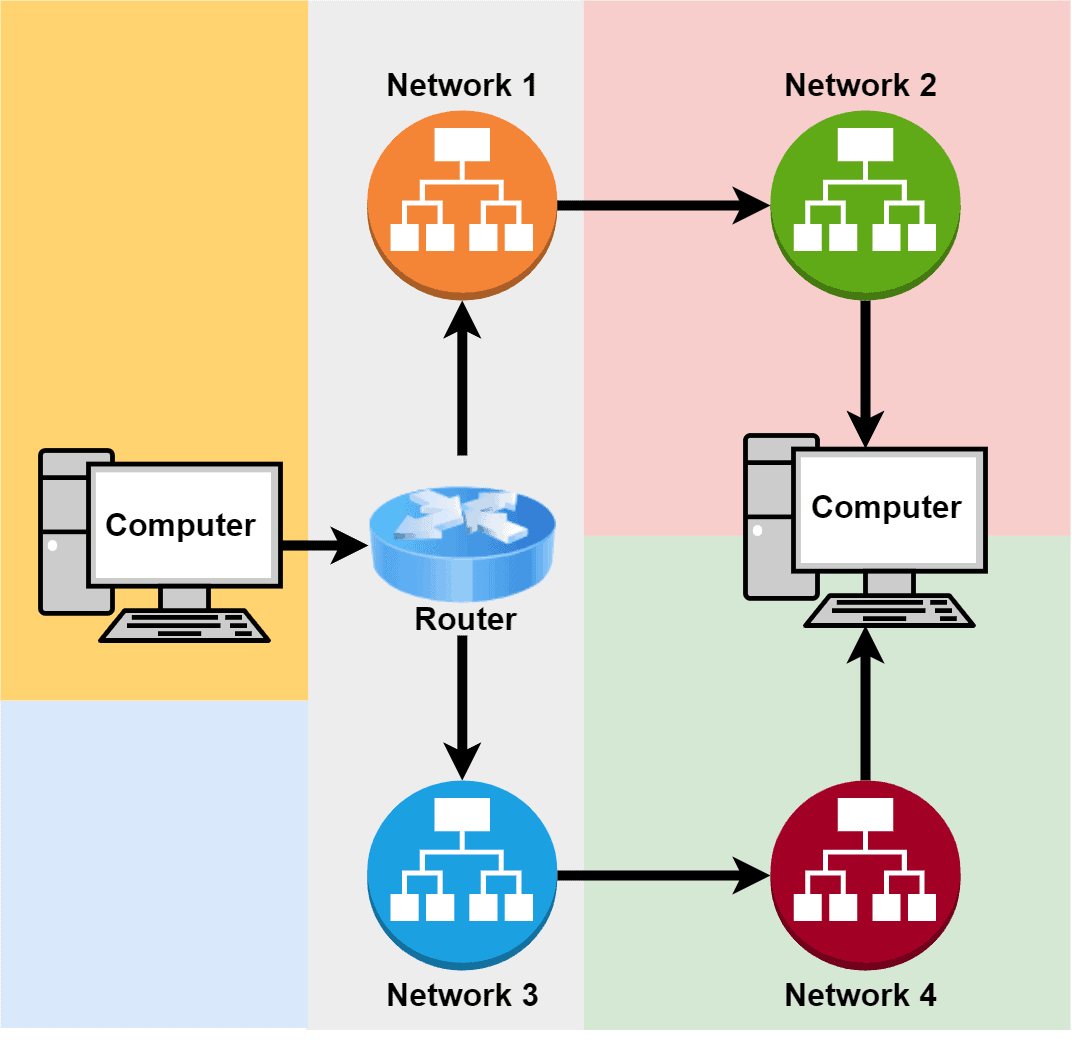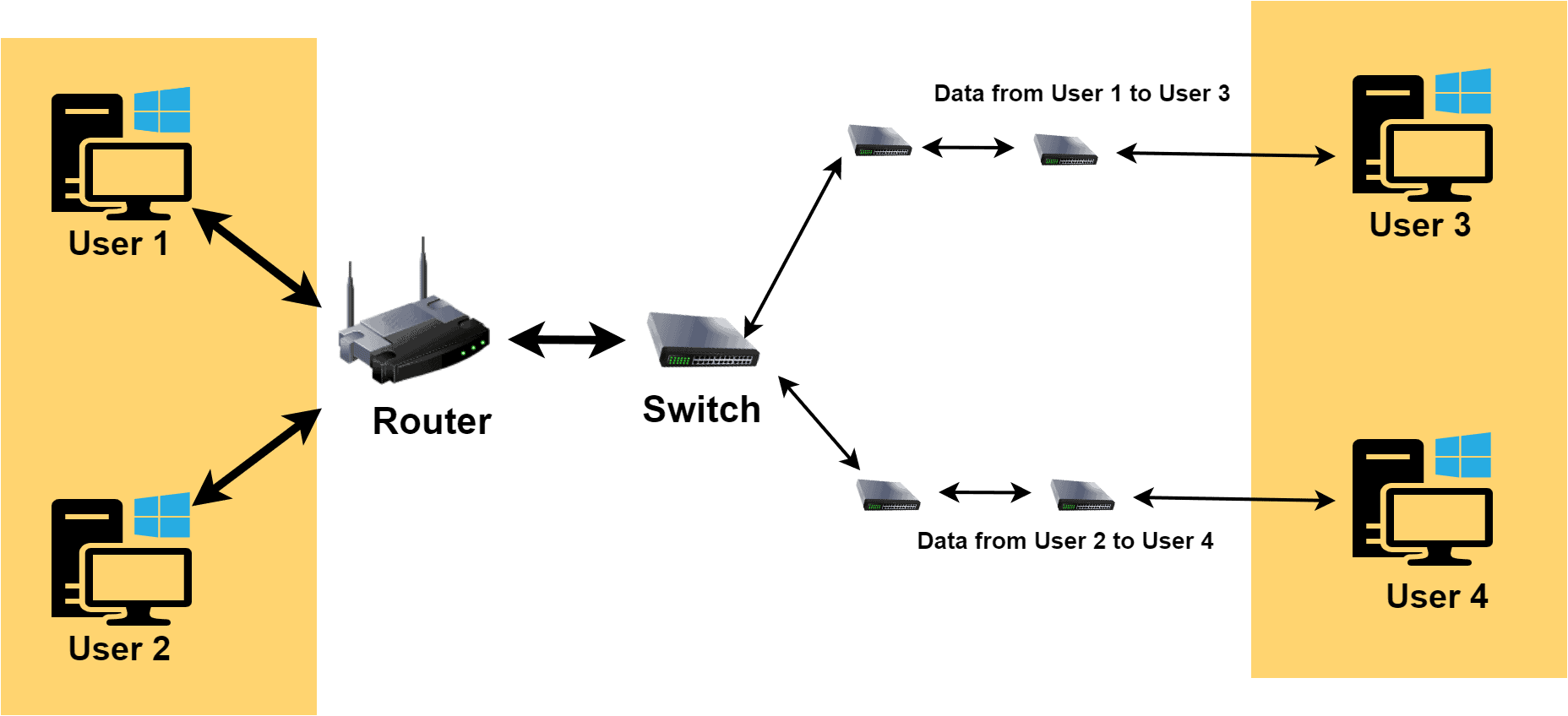1. 概述
在本教程中,我们将通过示例来深入解析 路由(Routing)、转发(Forwarding) 和 交换(Switching) 这三个网络通信中的核心概念。
同时,我们会对比它们之间的核心区别,帮助你在实际开发或网络设计中做出更准确的技术选型。
2. 网络协议基础
在讨论路由、转发和交换之前,我们先回顾一下网络协议的基本概念。
网络协议是计算机系统之间通信所遵循的一组规则。 当前主流的协议包括:
- 以太网(Ethernet):用于有线设备之间的连接。
- TCP/IP:构建基于无线或有线连接的网络通信。
- 光纤通道(Fibre Channel, FC):用于高速数据传输,常见于存储网络。
在数据从发送端传输到接收端的过程中,我们常会遇到“路由”、“转发”和“交换”这些术语。它们在数据传输中各自扮演不同的角色:
- 路由:决定数据如何在网络间传输。
- 转发:将数据从一个设备传送到另一个设备。
- 交换:根据MAC地址将数据包发送到特定设备。
接下来我们逐一讲解。
3. 路由(Routing)
✅ 路由是指将数据从一个设备传送到另一个设备的过程。
通常由路由器(Router)来完成路由功能。路由器不仅能连接多个网络,还可以根据网络状况动态选择最佳路径。
在OSI模型中,路由属于网络层(Network Layer)。它会根据路由表和路由算法(如RIP、OSPF)选择最优路径。
路由分类
| 类型 | 描述 |
|---|---|
| 静态路由(Static Routing) | 由管理员手动配置路径,不自动调整 |
| 默认路由(Default Routing) | 所有数据包走预设路径,适用于单出口网络 |
| 动态路由(Dynamic Routing) | 使用协议(如RIP、OSPF)自动发现和更新路径 |
📌 路由 ≠ 转发
虽然有时“路由”也被称作“转发”,但二者本质不同:路由是路径规划,而转发是执行路径的传递。
示例图解

4. 转发(Forwarding)
✅ 转发是指将接收到的数据包从一个设备传送到另一个设备的过程。
转发发生在中间节点(如路由器),它不负责路径选择,而是根据路由表或转发表将数据包传输出去。
转发设备
常见的转发设备包括:
- 路由器
- 交换机
- 集线器(Hub)
转发方式
| 方法 | 描述 |
|---|---|
| 下一跳法(Next Hop) | 将数据包转发到下一跳网关 |
| 网络特定法(Network-specific) | 路由表中记录的是目标网络 |
| 主机特定法(Host-specific) | 路由表中记录的是具体的目标主机 |
示例图解

5. 交换(Switching)
✅ 交换是指将数据包从一个端口转发到另一个端口的过程。
交换可以在连接导向(Connection-oriented) 或 无连接(Connectionless) 模式下进行:
- 无连接交换:无需建立连接,直接根据MAC地址转发。
- 连接导向交换:使用预定义电路路径进行传输。
交换技术分类
| 类型 | 描述 |
|---|---|
| 电路交换(Circuit Switching) | 传输前建立专用电路(如传统电话系统) |
| 报文交换(Message Switching) | 整个数据作为报文转发 |
| 分组交换(Packet Switching) | 数据被切分为小包独立传输(如TCP/IP) |
交换设备
- 交换机(Switch)
- 集线器(Hub)
- 路由器(部分功能)
示例图解

6. 核心区别对比
| 对比维度 | 路由(Routing) | 转发(Forwarding) | 交换(Switching) |
|---|---|---|---|
| 定义 | 决定数据路径 | 执行路径传输 | 在端口间转发数据 |
| 工作层级 | 网络层(L3) | 网络层(L3) | 数据链路层(L2) |
| 地址依据 | IP地址 | 路由表/转发表 | MAC地址 |
| 常见协议 | RIP、OSPF | UDP、ESP | STP、ARP |
| 作用范围 | 网络间通信 | 路由器内部处理 | 同一网络内通信 |
📌 踩坑提醒
- 不要混淆“转发”与“路由”,转发只是路由流程中的一环。
- 交换机工作在L2,不能跨网段通信;跨网段需使用路由器或三层交换机。
7. 总结
本文我们通过定义、示例和对比,详细解析了:
- 路由:路径选择,网络层处理,基于IP地址。
- 转发:路径执行,网络层处理,依赖路由表。
- 交换:端口间数据转发,数据链路层处理,基于MAC地址。
📌 建议
在实际开发或网络设计中,理解这些概念有助于你更高效地排查网络问题、优化系统架构,尤其是在分布式系统、微服务通信或网络编程场景中尤为重要。